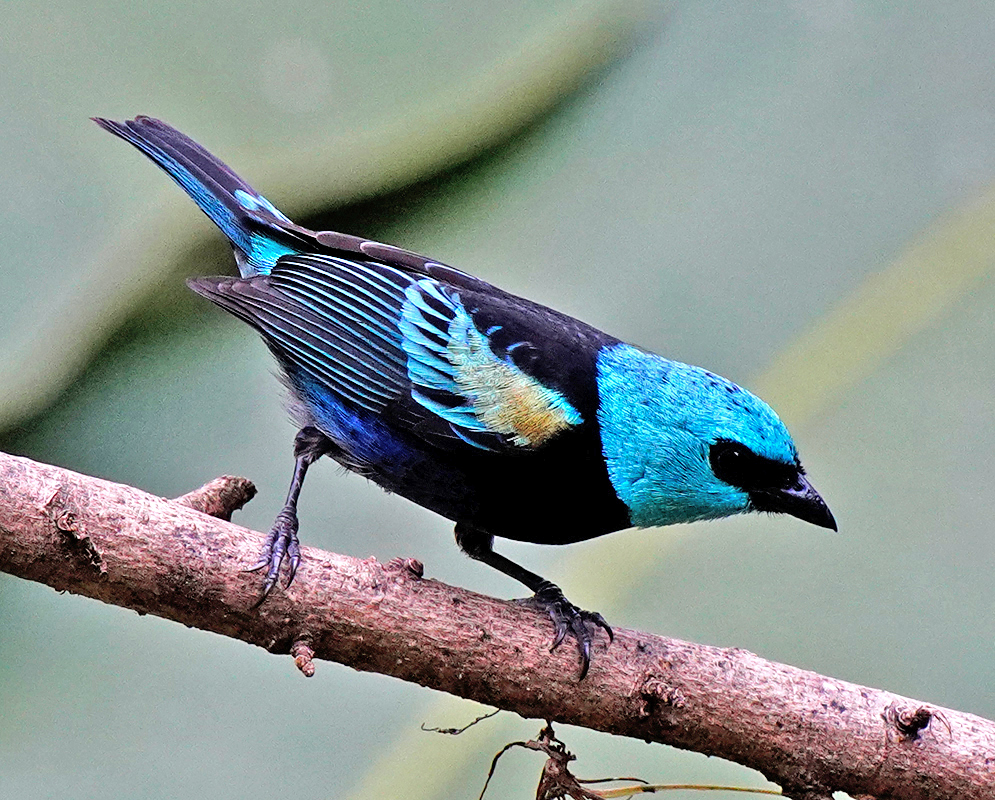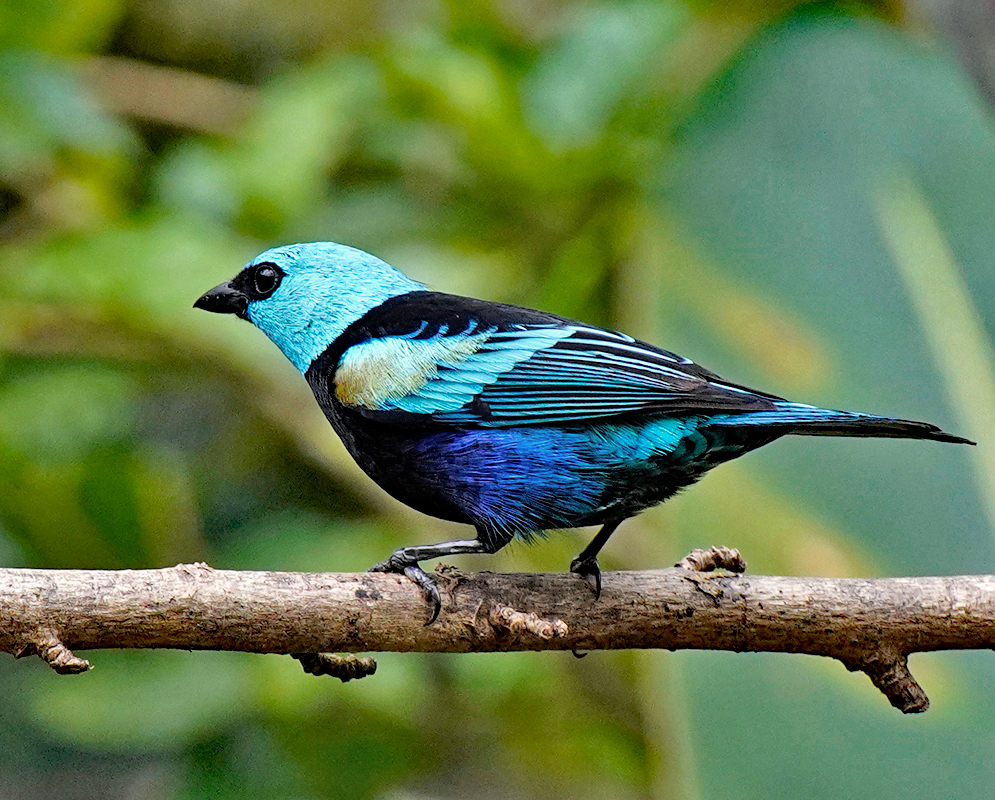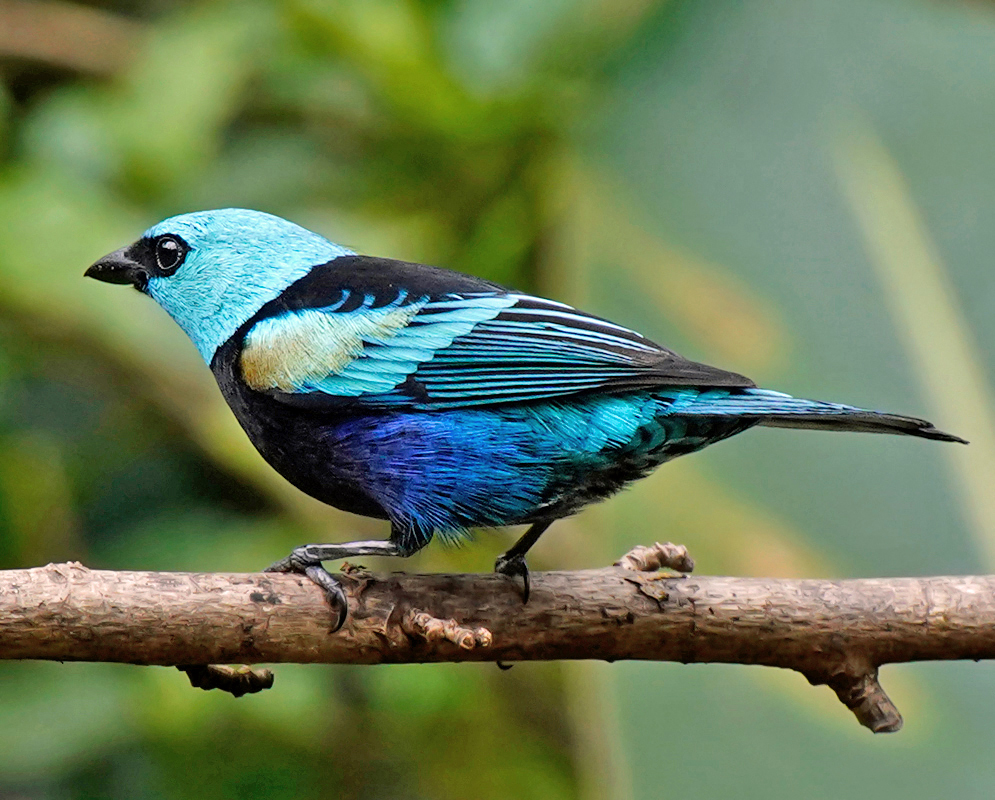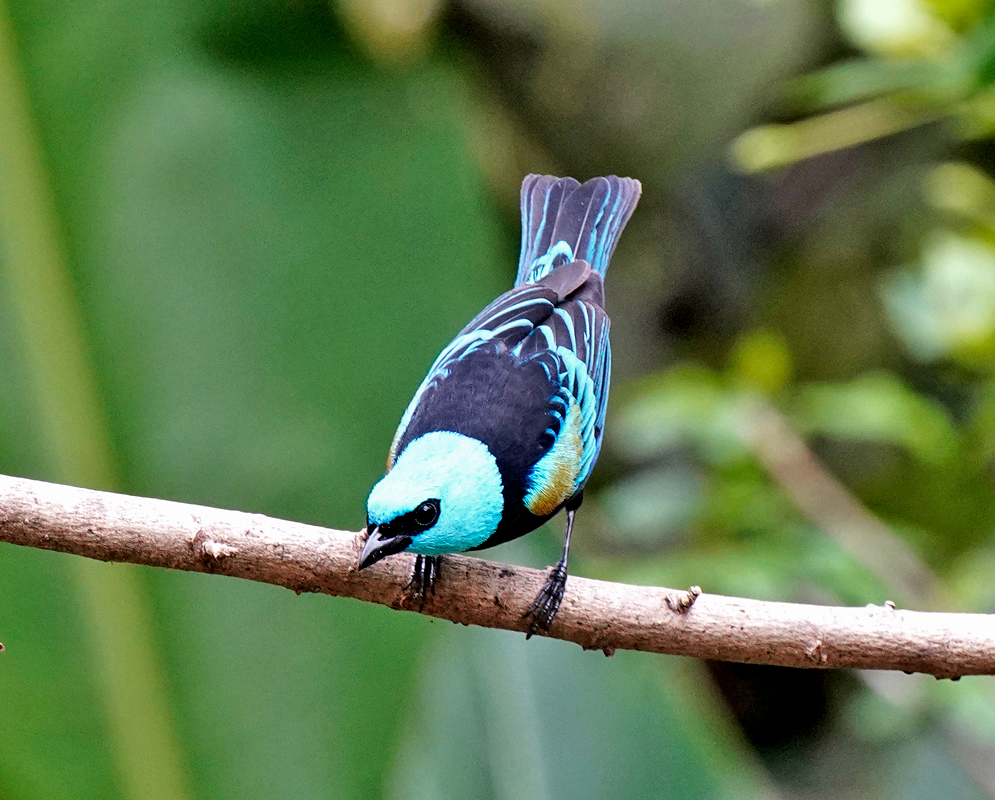This post has 11 Simple Fields-fields attached. Show fields.
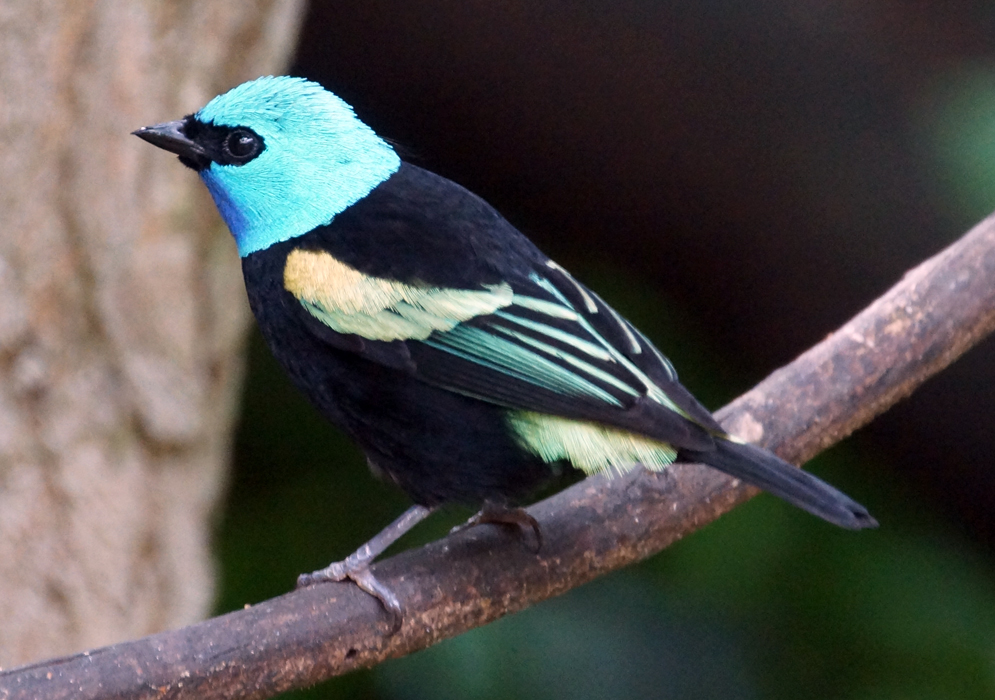
The Blue-necked Tanager is prevalent in South America. This bird is relatively small, averaging about 4.7 inches in length and weighing around 0.6 ounces. Its striking appearance includes a blue hood and throat, with turquoise to greenish straw-colored wing coverts, wing edges, and rump. The posterior underparts vary in color from black, violet, to blue. Juveniles exhibit a brownish-gray tone with hints of the adult's coloration. The beaks, legs, and feet are black, and their diet mainly comprises fruits, berries, flower blossoms, and insects. They often pick insects from leaves or catch them mid-flight, though fruits constitute the bulk of their diet. The Blue-necked Tanager nests in habitats like subtropical or tropical moist lowland forests, subtropical or tropical moist montane forests, and areas of heavily degraded former forest. The female constructs a cup-shaped nest using moss, usually in well-concealed locations. The nest typically contains an average of two white eggs with brown spotting. The incubation period lasts approximately 13 to 14 days, and the chicks fledge after about 15 to 16 days. Both the male and female are involved in feeding the nestlings, which include a diet of insects and fruit. Sometimes, the parents may be assisted by helpers in feeding the young. This species is listed as "Least Concern" by the IUCN. The Blue-necked Tanager can also adapt to living in urban areas, as they are quite common in Andean foothills and have a separate population in the Brazilian lowlands. These birds are usually found in pairs or small groups, often accompanying mixed-species flocks through the canopy.
